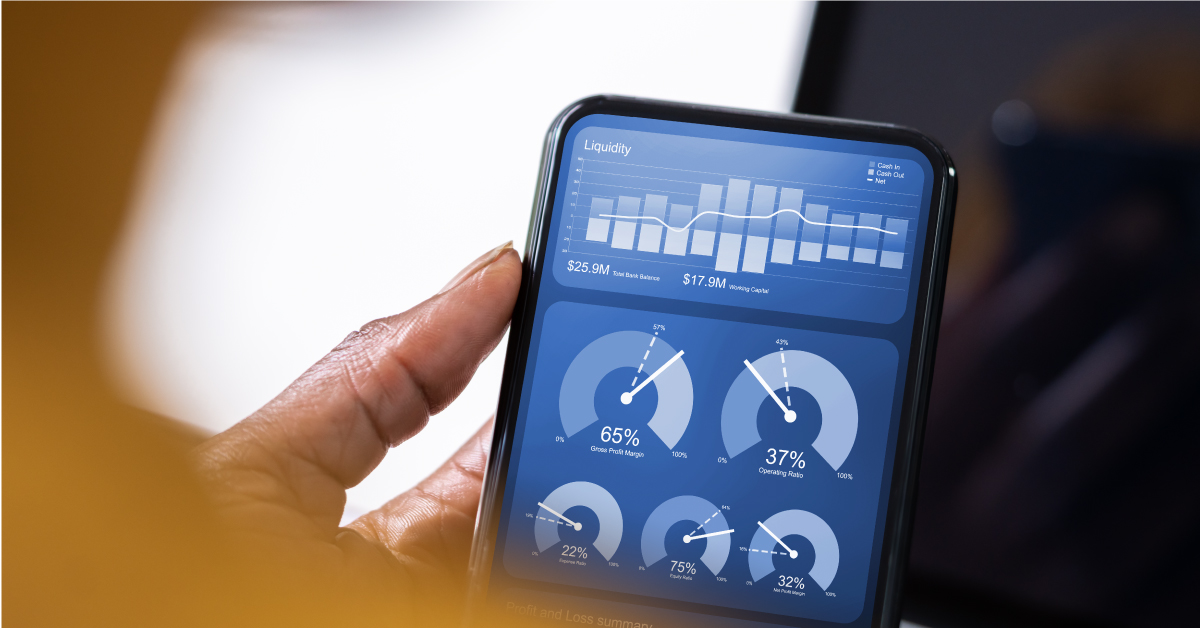Worth over $257 billion in 2022, the software as a service (SaaS) market is expected to reach a whopping $1.3 trillion by 2030. This unprecedented growth can largely be attributed to this market’s flexibility, cost efficiencies, ease of use, and adaptability. For instance, these types of businesses no longer need to invest heavily in hardware or licenses, reducing upfront costs. Additionally, the SaaS usage-based pricing model used by a growing number of companies makes their products more accessible, allowing for faster growth.
SaaS Usage-Based Pricing: What it is and What it isn’t
Usage-based pricing is a pricing model where customers are charged based on how much of the product or service they use. For example, utilities are largely usage-based – you pay based on how much water, electricity, or gas is consumed – not a penny more or a penny less. This type of pricing model aligns the cost of the product/service with the value a customer receives.
With SaaS usage-based pricing, instead of paying a fixed monthly fee, the cost is based on how much of the product / service is used. There’s a wide range of SaaS metrics – ranging from general to industry specific. Here’s some metrics that apply to a wide range of SaaS platforms, as well as those that are more industry specific.
Metric Category | Metric Type | Usage |
General SaaS Metrics | Number of active seats | Collaboration or productivity tools, e.g. CRM software |
API calls / requests | Developer-focused or integration-based tools | |
Data storage / bandwidth | Cloud services or file storage platforms | |
Transactions processed | Payment processors and financial platforms | |
Time used / compute time | Infrastructure tools or machine learning (ML) platforms | |
Events tracked | Analytics and monitoring tools | |
Artificial Intelligence (AI) & ML-based SaaS Metrics | Tokens processed | Natural language processing (NLP) APIs |
Inference hours / GPU time | Heavy compute AI platforms | |
Model runs / predictions | Charged per run or batch of AI predictions | |
Communications / Messaging SaaS | Messages sent / received | Chat or SMS platforms |
Minutes of call time | VoIP services or contact center software | |
Number of conversations | Chatbot or customer support platforms | |
Developer Tools & APIs | Build minutes / CI-CD pipeline runs | Tools like GitHub actions, Circle CI |
Data & analytics platforms | Number of queries / report runs | |
Rows scanned / data processed | Big data or warehousing platforms | |
Dashboards or visualizations created | Analytics dashboards | |
Web & Cloud Infrastructure | Bandwidth / data transfer | Hosting and content delivery network (CDN) providers |
Uptime monitoring checks | Infrastructure monitoring platforms | |
eCommerce & Fintech SaaS | Revenue processed | Platforms take a percentage or a fee per transactions |
Orders processed | Used by eCommerce platforms | |
Invoices issued | B2B billing and finance SaaS |
For instance, a cloud storage SaaS company charges $0.10 per GB of storage a month and $0.05 per GB of data transferred. If a company stores 100 GB and transfers 50 GB, their monthly invoice would be $12.50 (Storage: 100 x $0.10 = $10 + Transfers: 50 x $0.05 = $2.50)
Usage-Based Pricing vs. Other Pricing Models
While the terms usage-based pricing, consumption-based pricing, and metered pricing are often used interchangeably, there are subtle differences – especially in SaaS, cloud services, and utilities.
Usage-Based Pricing
Think of usage-based pricing as the overall category of paying based on actual use. This umbrella pricing model is where customers pay based on how much they used the product or service. A broad term, usage-based pricing includes both consumption-based pricing and metered pricing.
Consumption-Based Pricing
Consumption-based pricing is considered a subset of usage-based pricing where charges are tied directly to the resources consumed – not just access or activity. It’s focus typically refers to the actual value consumed like compute time or data processed
Metered Pricing
Another form of usage-based pricing, it tracks specific units of usage. Metered billing often refers to a clearly quantifiable and tracked unit of measure like minutes, GBs, or requests made.
Let’s take this one step further and discuss subscription-based pricing. Subscription-based pricing is defined by a fixed recurring fee, regardless of usage, however some companies blend both usage-based and subscription-based pricing for optimal results. This hybrid pricing model is best for customers where consistent usage is the norm, but spikes are periodically encountered. The combination of usage-based pricing and subscription pricing enables the company to tack on additional charges for usage beyond a set limit.
Usage-Based Pricing: Benefits and Challenges
Usage-based pricing offers both advantages and disadvantages for both companies and customers alike. Let’s look at the top benefits and challenges of this pricing model for companies and customers alike.
Company Benefits
- Increased revenue potential – As usage increases, revenue increases without requiring upsell initiatives.
- Broader market appeal – By removing upfront cost barriers, companies can attract a wider range of customers.
- Customer stickiness – Customers often integrate more deeply over time, making them less likely to churn.
- Aligned with customer value – Pricing that is tied to usage means the customer is more likely to capture the value the company is delivering.
- Data-driven insights – Usage data helps companies understand how products / services are being used, which provides information to product development, upselling strategies, and customer support.
- Encourages efficient usage – Customers tend to be more mindful of usage, which helps companies optimize their operations.
- Competitor differentiation – Usage-based pricing helps companies differentiate from flat-rate competitors.
Company Challenges
- Billing complexity – Accurate usage tracking and billing can be complex, leading to customer confusion and even disputes.
- Revenue unpredictability – Since income fluctuates based on customer usage, companies may find it harder to forecast revenue or plan budgets.
- Pricing structure complexity – Pricing structures can be difficult to understand, especially if based on multiple variables.
- Customer acquisition – Prospects may have difficulty in estimating their future costs, which can hinder the sales process.
- Limited usage – Customers may limit usage to reduce costs, reducing the company’s opportunities for long-term value.
- Customer churn risk – While reduced churn is a likely outcome, there’s a chance that low usage can reduce perceived value and increase the likelihood of churn.
Customer Advantages
- Pricing transparency – Clear correlation between cost and usage can increase trust and customer satisfaction.
- Cost efficiency – Customers only pay for what they use, avoiding overpayment for unused products/services or features.
- Lower barrier to entry – This pricing model typically doesn’t include large upfront costs or long-term commitments.
- Business growth alignment – As the customer grows, their costs grow proportionally, making budgeting more predictable.
- Scalability and flexibility – Customers can scale their usage up or down based on their actual needs.
Customer Disadvantages
- Unpredictable costs – Depending on usage, monthly bills can vary greatly.
- Billing shock – Unexpected spikes in usage can lead to larger than anticipated charges.
- Difficult to understand – If pricing metrics aren’t transparent, customers may not understand how their usage directly affects their bill.
- Vendor lock-in – Some usage-based pricing models make switching providers difficult and / or expensive.
While usage-based pricing offers pricing fairness and flexibility, it can also create uncertainty and complexities. When onboarding this pricing model, be sure to carefully implement it and provide customer education.
Get Started with SaaS Usage-Based Pricing
Implementing SaaS usage-based pricing requires a structured approach, which includes 7 steps.
- Define a unit of measure that directly aligns with the value the customer will receive.
- Design unit costs or pricing tiers that are predictable for the customer, scalable for customer growth, and profitable for the business.
- Implement metering and tracking to accurately track usage.
- Ensure your billing system can read usage from your tracking system, calculate charges based on pricing logic, handle overages, apply discounts or credits, and generate invoices.
- Provide transparent usage to users in the form of real-time dashboards.
- Communicate with customers to make sure they understand what they are paying for.
- Once usage-based pricing is deployed, monitor revenue per user (ARPU) and track customer churn or confusion.
The Future of SaaS Pricing
In response to changing customer expectations, increased competition, and advancements in analytics and artificial intelligence (AI), SaaS pricing models are in a state of flux. One thing, however, is certain – usage-based pricing will continue to dominate. Let’s look at the top pricing model trends, starting with usage-based pricing.
Usage-based pricing: Customers want to pay for what they actually use. The usage-based billing model also aligns cost with value and scales naturally with customer growth.
Hybrid pricing models: To improve revenue predictability and offer customers flexibility, many SaaS companies have begun to offer hybrid billing models that consist of a base fee along with variable charges.
AI-driven dynamic pricing: This tailored pricing model leverages AI to analyze customer behavior, usage, and willingness to pay, enabling companies to optimize pricing in real-time.
Personalized pricing: Using analytics, AI-based pricing intelligence tools, and customer segmentation, this pricing model provides high-value customers with pricing that is tailored to their needs, such as with volume discounts, performance service level agreements (SLAs), etc.
The above is just the tip of the iceberg when it comes to the future of SaaS pricing. Other pricing models you may see in the near future include freemium & product-led growth (PLG) pricing, FinOps & procurement driven pricing, and bundling & module pricing that allows customers to build their own plans.
Seize Market Opportunity with SaaS Usage-Based Pricing
The SaaS industry is always changing, and our enterprise billing solutions are designed to change along with it. BillingPlatform provides the power you need to automate enterprise-grade revenue lifecycle processes. From sophisticated usage-based pricing models to subscriptions and everything in between, we meet tomorrow’s challenges today.
Through automated invoicing, seamless tax application, and efficient collections management, our billing solution adapts to your needs, enhancing revenue generation and customer satisfaction.
Are you ready to revolutionize your billing operations and onboard usage-based pricing? If so, read why BillingPlatform was named a leader in the Forrester Wave: Recurring Billing Solutions, Q1 2025 report. If that sounds like a fit for your organization, contact our team to learn even more about how you can start leveraging our expertise today.



